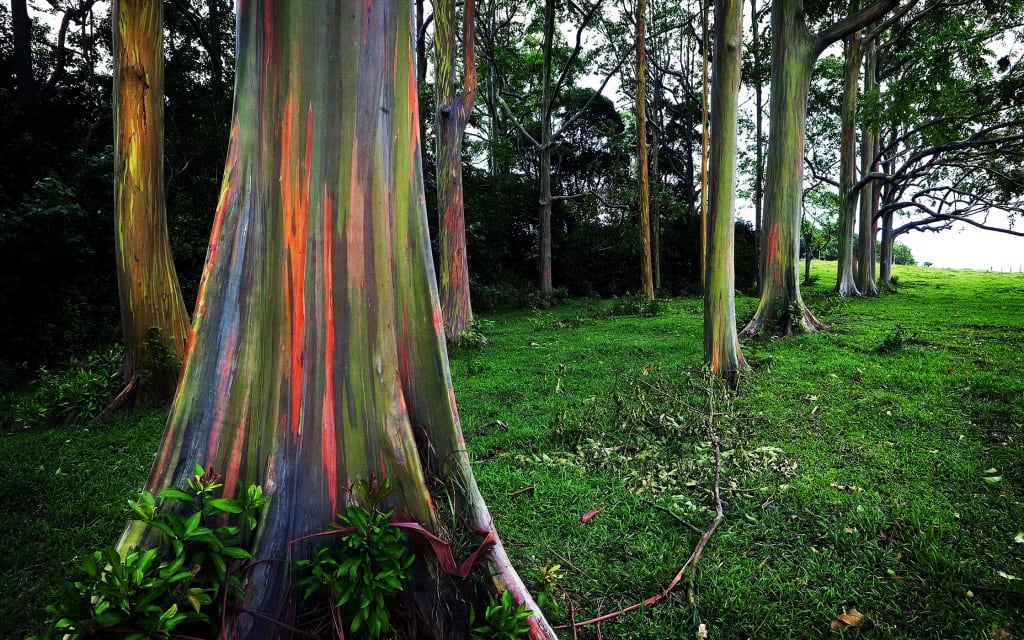
Asia
Rainbow Eucalyptus trees are native to Papua New Guinea, Indonesia, and the Philippines.
These trees have pale yellow flowers and a bark with rainbow colors. They grow in the lowlands in a rainforest habitat. These trees are harvested for pulpwood in paper making.
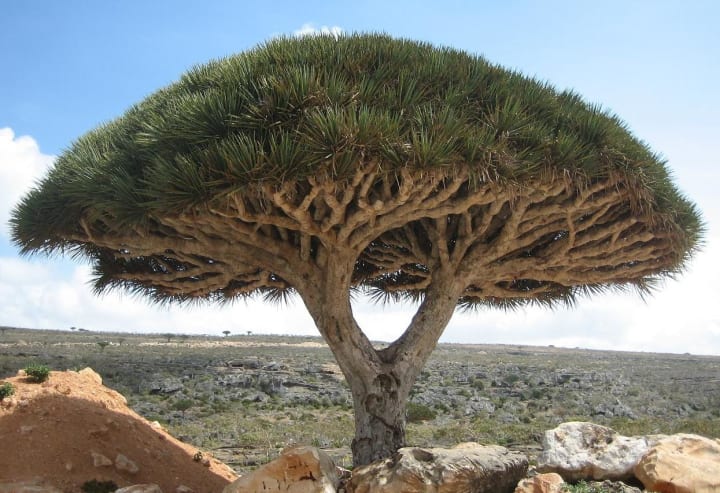
Socotra Dragon trees appear to come out of a fantasy. They are exclusively found in the Socotra region of Yemen.
Socotra Dragon trees are an unusual species in that they bleed or rather ooze red sap. The sap hardens to create resin which people harvest for medicinal purposes, use as a dye, and also for incense. These remarkable trees can live up to 600 years. Since they are only found on this one island conservation efforts are underway and these trees are considered to be an umbrella species.
Thailand
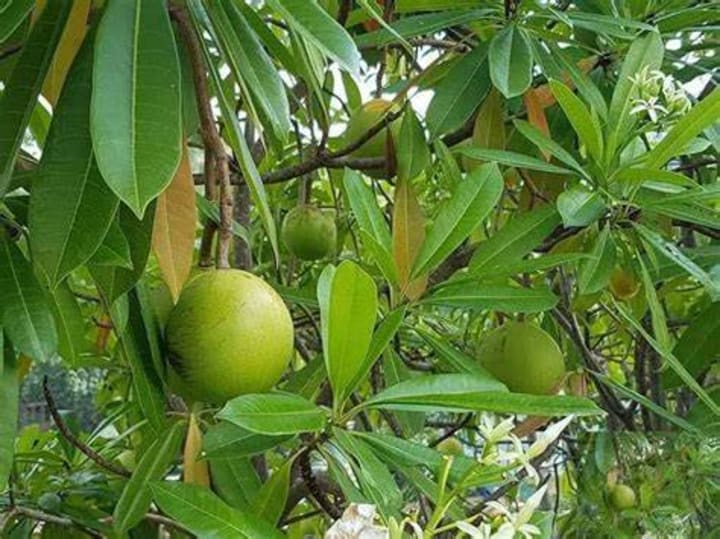
As strange as the name may be Ping Pong trees are native to parts of Southeast Asia and Queensland, Australia.
Ping Pong trees have a sinister nickname – suicide trees. The fruit of this tree is so toxic and potent that historically they were harvested by people looking for a way out of their lives. If you’re writing a murder mystery the fruit of these trees has been used in several murders. Despite all that the trees are an attractive species that are known to be grown in gardens in Thailand, They can be very decorative just their fruit is inedible. The trees are found in marshy or swampy areas.
India
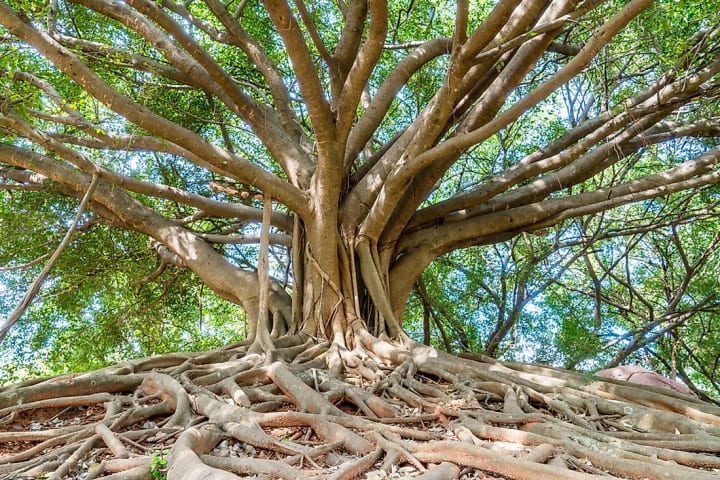
Banyan trees are a fig species and are native to the Indian Subcontinent but can also be found in West Bengal. The banyan tree is the National Tree of India.
Banyan trees can be creative. Their seeds land on other trees and take over the host, spewing out long roots that anchor them to the trees and these develop into a series of trunks that look like a mass of intrusive limbs. The largest banyan tree in India has a canopy that spreads for more than four acres and can shelter up to 20,000 people. Banyan trees are types of fig trees that rely on pollination by wasps. They are the main food source for local wildlife such as birds, bats, and primates.
Africa

Quiver trees are indigenous to South Africa. They are a type of succulent.
Quiver trees are not very large, They grow in arid locations and have hollow branches that are used to make quivers for arrows, The trees are adapted for desert conditions. Their light barks are covered in white powder to reflect the rays of the sun and their razor-sharp plates on the bark provide a layer of protection against animals.
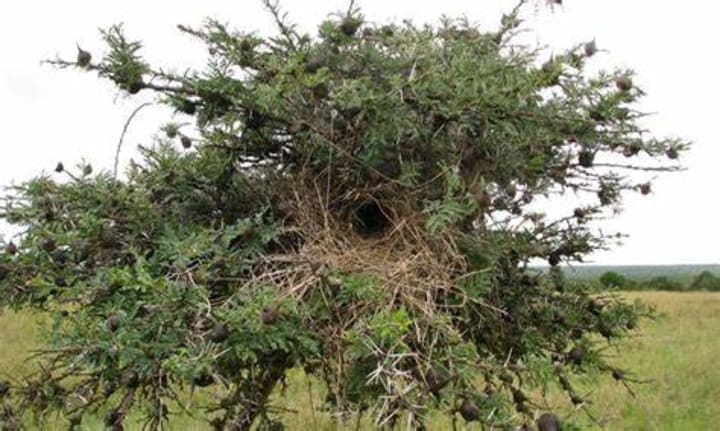
Whistling Thorn trees are found in the savannah of Kenya.
These trees are an unusual species that emit a whistling sound when the wind blows over the spines of the trees. Their spines are often inhabited by ants and to gain access the ants make little holes in the thick spines which produce the whistling sounds. You can say that nature has created its very own wind instrument.
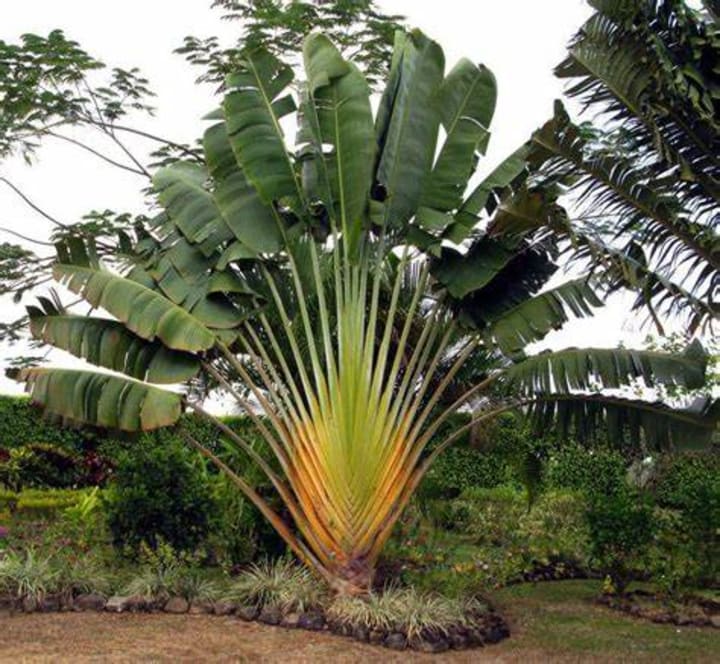
Traveler’s trees are considered to be hybrids between palm trees and banana trees, They are exclusive to the island of Madagascar.
These trees have bright blue seeds and grow little edible shoots to attract animals, When animals, mostly lemurs eat the seeds they disperse them pollinating the trees, Traveler’s trees have fan-shaped canopies that tower over the humid forest. The name of the trees comes from the fact that their stems have sheaths that can hold, significant amounts of water so if travelers are thirsty and without water they can find water in these trees.
Australia

Boab trees are only found in some parts of Western Australia and also in the country’s Northern Territory,
These trees are eye-catching with thick trunks that give them a bottle-like appearance, The bark of the trees can hold onto inscriptions for hundreds of years. Individual trees can live as long as 2000 years, They are usually found in open areas or forests and are the only species of boabs found outside of Africa and Madagascar.

Narrow-leaved bottle trees are found in Queensland, Australia
These trees have thick trunks that taper outward and give the trees their bottle-like appearances. Narrow-leaved bottle trees grow on hills or ridges. They can also be potted and grown in gardens, These trees were first discovered in 1848 and have been used by the indigenous people of Australia for many years, Native Aboriginals cut holes in the trunks of the trees to create a reservoir, They’d use all the parts of the trees for food and making things such as nets and rope. The pulp of the trees is tasty and edible.
New Zealand

Toothed lancewood trees have leaves that are shaped like teeth giving them an unusual appearance. They are native to New Zealand.
The leaves of these trees could be mistaken for small branches since they look like long, green, leathery appendages which sprout outwards from the tree, They are a popular garden tree and have found a place in British gardens.
North America
The US
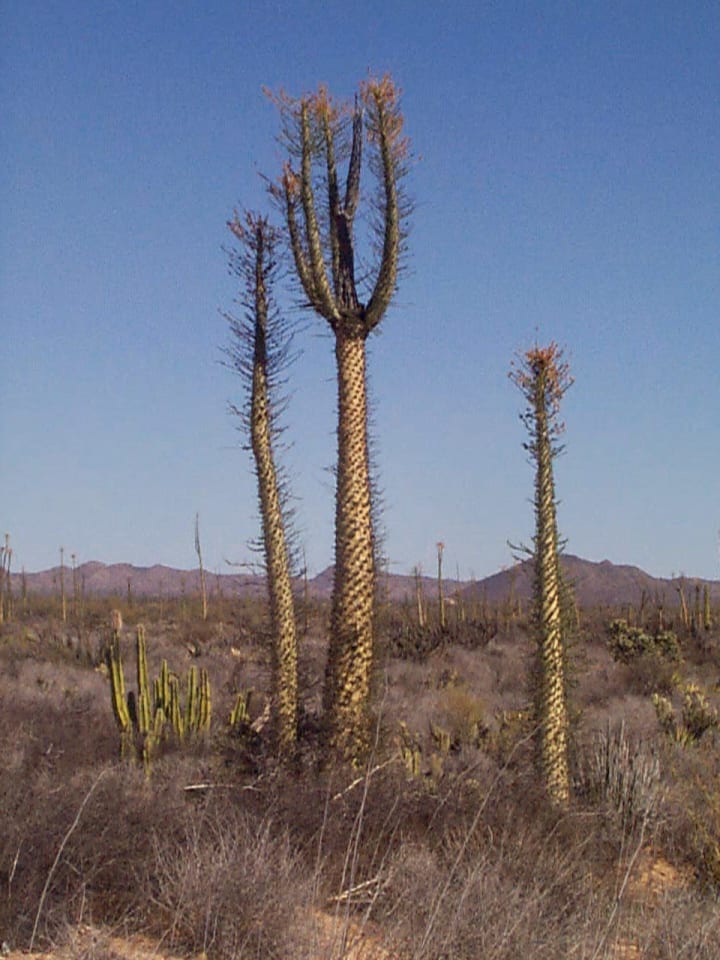
Boojum trees are almost exclusive along the Baja California Peninsula.
At first boojum trees appear to be types of cacti. They are succulents. These unusual-looking trees have branches growing haphazardly and swollen trunks. They grow in arid regions and are often found in rocky dry areas.

Bristlecone pines are one of three species that are all native to North America.
These pine trees are among the longest living trees on the planet, They can survive in the harshest conditions at high elevations, The oldest living bristlecone pine was thought to be almost 4,500 years old, If a tree dies it can continue as a dead tree for many more thousands of years.
North/South America

Sandbox trees are explosive and found in tropical regions in both North and South America.
These trees grow up to 98 feet in height. When the time comes for these trees to reproduce their pumpkin-shaped seeds blast open into segments in order to spread, These trees can be considered dangerous since no one knows when the fruit pods might explode. The trees have poisonous barks and leaves.

Manchineels are tropical trees also found in both North and South America.

These trees have green fruit and have been named from the Spanish word for “little apple” manzanilla. It is these fruits that make the trees one of the strangest in the world. The fruits are very toxic with a milky white sap that can cause skin to blister. They like to grow in sandy areas and can be found along beaches in places like the US state of Florida and the Caribbean,
Central America

Kapok trees can grow to be 262 feet in height. They are one of the fastest-growing tree species in the world and native to Central America/
The fruits of these trees can grow up to 3 feet in size and contain fleece-like material that is used in blankets. The fruit is inedible and is toxic with chemicals that can irritate the eyes and the respiratory system, These trees are steeped in history and folklore with some Caribbean nations believing that the kapok is a prison for the Devil of Death.
Central/South America
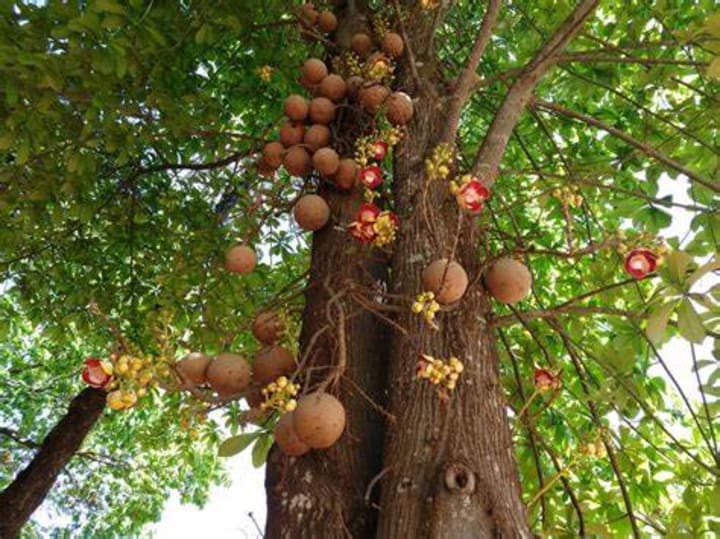
Cannonball trees are in the same family as Brazilian nut trees, They are native to both Central and South America growing in tropical rainforest regions/
The fruits of these trees grow directly out of the trunk and when the fruits are ripe they are the size of cannonballs, Cannonball trees also have beautiful large pink flowers with six petals. It is important not to stand under these trees when the ripe fruit falls to the ground,

Monkey puzzle trees are very unusual looked, They are types of pine trees and are native to parts of Central and South America.
The leaves of the trees twist in a spiral around the branches and are so dense it looks like there aren’t any branches just leaves, The gray and wrinkled bark of the trees looks like the skin of an elephant. They can grow up to about 130 feet in height and are popular as garden trees since they’re tolerant of various soil types,
South America
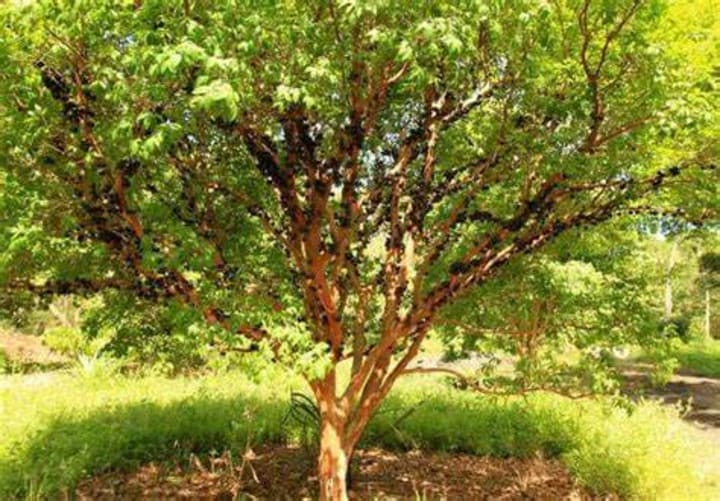
Jabuticaba trees are native to Brazil.

These trees have fruit coming right out of their trunks, The fruits are deep purplish black when ripe and are edible, These fruits are the most common fruits eaten out of hand and are popular in various wines and jams,
About the Creator
Rasma Raisters
My passions are writing and creating poetry. I write for several sites online and have four themed blogs on Wordpress. Please follow me on Twitter.
Enjoyed the story? Support the Creator.
Subscribe for free to receive all their stories in your feed. You could also pledge your support or give them a one-off tip, letting them know you appreciate their work.


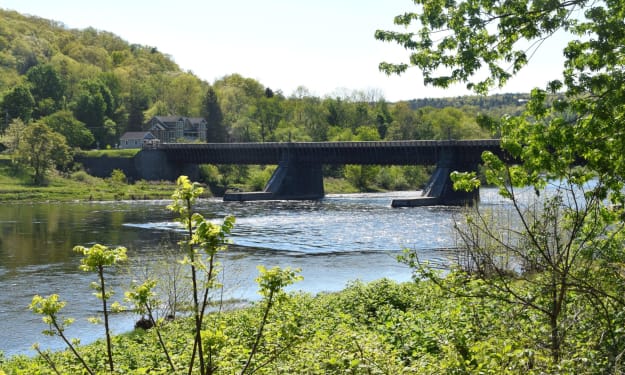
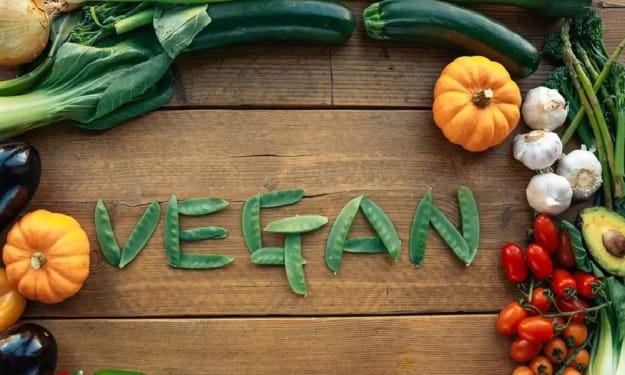


Comments (1)
This is a very interesting article, and I really liked all the pictures of all the trees. This was like taking a virtual field trip all over the world.